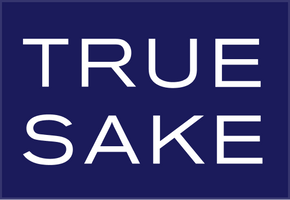
Sake Expressions – Dassai Blue Is Ready For You!
(Using my best carnival voice) “Hurry Hurry, Step Right Up and Get Your Dassai Blue – Dassai Blue – Get your Dassai Blue Here – Right Here.” Last month we held the first Dassai Blue tasting on the West coast, but we didn’t have any product to sell to the tasters. Now we do!
Almost everybody in the world has heard of the ultra popular sake brewery empire in Yamaguchi Prefecture Japan called Dassai (Otter Festival). It literally is the top selling Junmai Daiginjo series in the entire world, and really highlighted the milling trend as they made their famous 45% - 39% - and 23% household words. And yes, they changed the course of buying Yamadanishiki brewing rice in Japan (considered to be the best brewing rice in the business). The brewery uses so much Yamadanishiki that they created a national competition to grow and sell the best to Dassai. The farmers with the best Yamadanishiki win the competition and Dassai buys it all, usually paying above market price. All crazy successes for the win! The farmers win, the brewery wins, and the consumers win.
But wait there’s more! Say hello to Dassai Blue made right here in the good ol’ US of A in Hyde Park, New York. And now you can be the first to buy these specially crafted sakes that are made with both US and Japanese grown Yamadanishiki.
Dassai Blue 23 and Dassai Blue 50 are made with Yamadanishiki from Japan, and Dassai 35 is made with Yamadanishiki from Arkansas. They use their own proprietary yeast from Japan, but their water is of course made locally in New York. (I won’t mention that they spent $1,000,000 on a water filtration machine, because it is the only real terroir with these brews for now! Their goal is to grow all of their brewing rice in the US.)

On a personal note, I am extremely thrilled about the entire Dassai Blue operation and its fingerprint on the history of the international sake market. Firstly, Dassai has done so much for the entire sake world, and it is both celebrated and envied. I think the story itself, which started in 1984, is one of success and excellence in sake, and an expression that has seen no equal since. Congrats to the entire Sakurai family and the Dassai team. Well done! And my odyssey with Dassai started in 2003 when I tasted the 23 in Tokyo and was pretty much blown away with the whole Ultra milling for the masses approach. In fact, I met Hiroshi Sakura in 2004 at True Sake when he visited the store even before Dassai was exported to the US. Herewith is my letter to Hiroshi-san after the visit:
June 20, 2004, San Francisco
Mr. Hiroshi Sakurai
Hiroshi-san,
Thank you very much for visiting my store TRUE SAKE in San Francisco last week.
I greatly appreciate when we receive visitors from kura in Japan, and I enjoyed answering your questions.
Please inform me when Dassai will be ready for export. Perhaps you could advise Mutual Trading Co. to give me a call when it arrives, and I will gladly and proudly sell this sake to my customers. As I mentioned to you my wife and I love otters, both sea and river otters, and the name alone makes me thirsty for your amazing nihonshu milled to 23%.
When I was in Japan in January I tried your Dassai JDG with a SMV: +3 and Acidity: 1.5. The nose was very soft with hints of flower petals and clover honey. The flavor was big and clean with lots of pear and apple tones and a nice light and dry finish. It was balanced and excellent. Does this sake use kobo Association #9 or #10?
Hopefully you have concluded from your visit to my store that I am deadly serious about nihonshu. It is my god and my store is my church for those wanting to learn more about this amazing beverage.
I think the education process is the most important step for marketing sake correctly here in the U.S. And I strive to educate my customers as well as I can, and would be honored to let them try your sake.
Thank you again for the visit, and if it is not too much to ask, I was wondering if you have postcards and videos about your brewery? I would gladly show them in my store. I also like aprons very much that I can wear in the store whilst working.
All of my best,

Dassai Blue Type 35
Dassai Blue Type 50
